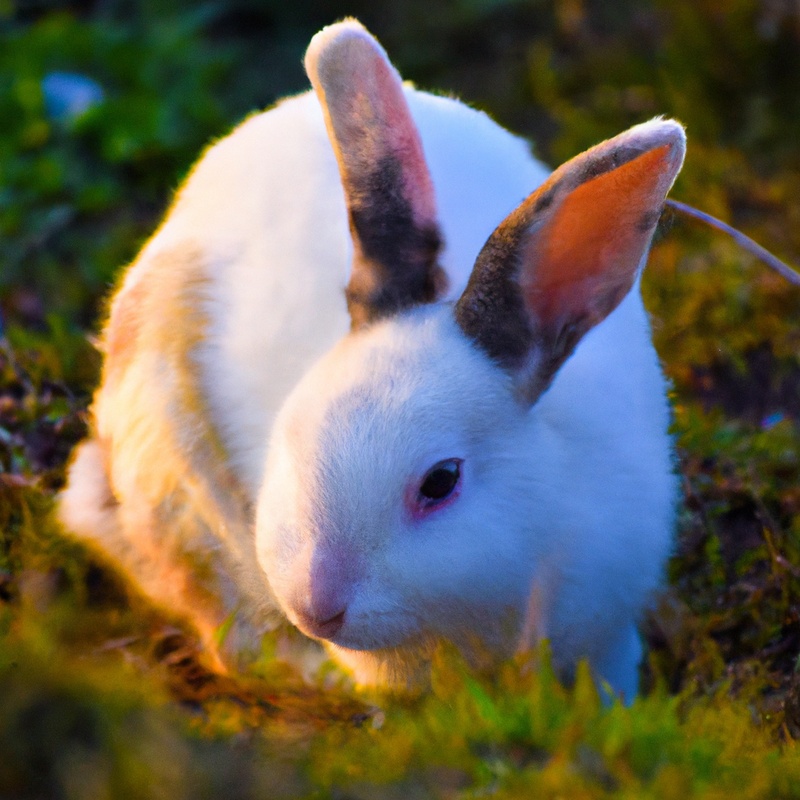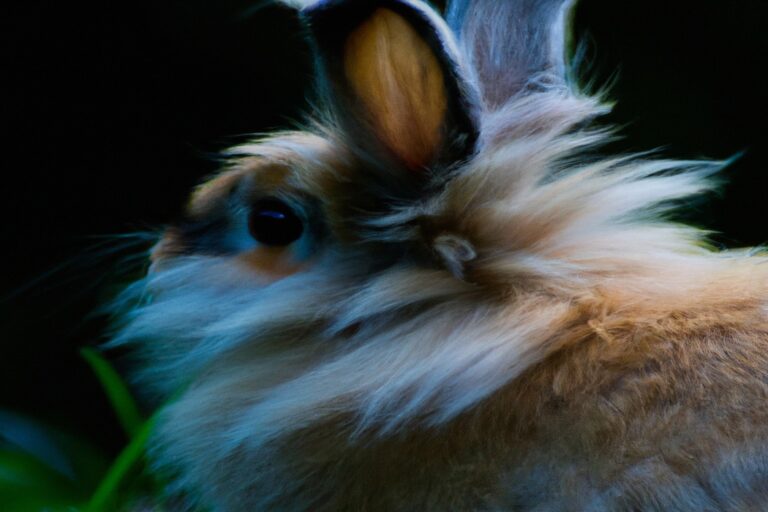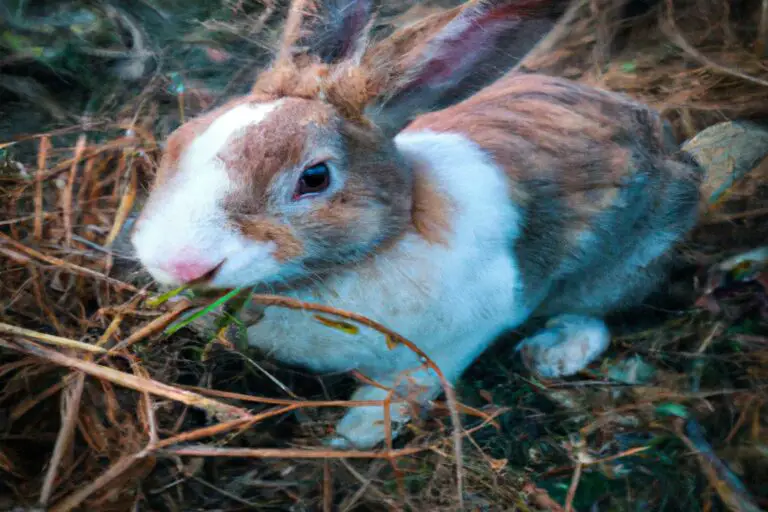Do Male Rabbits Have Nipples? Surprise!
Key Takeaways:
- Male rabbits do have nipples, although they typically serve no functional purpose.
- The number of nipples can vary among different rabbit breeds and individuals.
- Nipples in male rabbits are usually smaller and less visible compared to those in females.
- Nipples can provide clues about a rabbit’s gender, but additional factors should also be taken into consideration for accurate identification.
Have you ever wondered if male rabbits have nipples?
It’s a fascinating question that may not have crossed your mind before.
In this article, we will dive into the world of male rabbit anatomy and explore the truth behind their mysterious nipples.
We’ll discuss the purpose of nipples, how they develop in male rabbits, and various factors that can affect their visibility.
Additionally, we will address common questions like whether male rabbits can produce milk, nurse their offspring, develop mastitis, or if nipple visibility is a sign of health issues.
Get ready, because we’re about to uncover some surprising facts about male rabbits and their nipples!
Male Rabbit Anatomy
Male Rabbit Anatomy includes both external and internal structures of the male rabbit’s body.
External Anatomy
The external anatomy of a male rabbit includes some distinct features. They have two large ears that help them detect sounds, a small, twitchy nose that aids in smelling, and long whiskers that assist with navigation.
Male rabbits also have a pair of prominent incisors that they use for chewing.
Additionally, they have strong hind legs that allow them to jump and hop with agility. The fur on the body varies in color and can be soft and fluffy.
While male rabbits do not have visible nipples, they possess other external reproductive organs, including a scrotum and a penis.

Internal Anatomy
The internal anatomy of a male rabbit is quite fascinating. It includes a variety of organs and structures that play important roles in the rabbit’s overall health and well-being.
Some key components of the male rabbit’s internal anatomy include the heart, lungs, digestive system, reproductive system, and urinary system.
The heart is responsible for pumping blood throughout the rabbit’s body, ensuring that oxygen and nutrients are delivered to all the cells. The lungs are responsible for taking in oxygen and removing carbon dioxide from the body through the process of respiration.
The digestive system of a rabbit is specially adapted to break down plant material.
It consists of the mouth, esophagus, stomach, small intestine, large intestine, and cecum. The cecum is a crucial part of a rabbit’s digestive system, as it helps in the digestion of fibrous plant material.
The reproductive system of a male rabbit includes testes, epididymis, vas deferens, and penis.
The testes produce sperm, while the epididymis stores and matures them. The vas deferens carries sperm from the testes to the penis, where it is expelled during mating.
The urinary system of a male rabbit includes kidneys, ureters, bladder, and urethra.
The kidneys filter waste products from the blood, producing urine. The ureters transport urine from the kidneys to the bladder, where it is stored until it is expelled through the urethra.
Understanding the internal anatomy of a male rabbit is important for both rabbit owners and veterinarians.
By having knowledge of these internal structures, we can better care for our furry friends and quickly identify any potential health issues that may arise.

Do Male Rabbits Have Nipples?
Yes, male rabbits do have nipples.
Explaining the Purpose of Nipples
Nipples serve an important purpose for both male and female rabbits. They are not just exclusive to females.
In males, nipples have no reproductive function but still have a role in the rabbit’s development.
Nipples provide vital nutrition to newborns, delivering milk from the mother’s mammary glands. They are also sensitive and can act as a source of stimulation or bonding during grooming.
So, while male rabbits don’t use their nipples for reproduction, they still play a part in their overall biology and well-being.
Nipple Development in Male Rabbits
Male rabbits do have nipples, although they are not usually as prominent as those on female rabbits. Nipple development in male rabbits occurs during their fetal development.
However, hormones play a significant role in determining the size and visibility of the nipples.
While male rabbits may have nipples, they typically do not lactate or nurse young ones like females do. These nipples serve no functional purpose in males and are primarily a remnant of their embryonic development.
Factors Affecting Nipple Visibility in Male Rabbits
Factors such as breed differences, age, and health conditions can affect nipple visibility in male rabbits.
Breed Differences
Breed Differences: Male rabbits exhibit variation in the visibility of their nipples based on their breed. Certain breeds, such as the Rex and Satin breeds, typically have more visible nipples due to their shorter and denser fur.
On the other hand, breeds like the Angora and Lionhead have longer and thicker fur, which may make their nipples less noticeable.
It’s essential to consider these breed differences when observing nipple visibility in male rabbits.
Age Factors
Age is a significant factor that affects nipple visibility in male rabbits. As male rabbits mature, their nipples become more prominent and may be easier to see.
This is especially true during adolescence when the hormones are changing and the body is developing.
Younger rabbits may have less visible nipples, while older rabbits might have more noticeable ones. It’s important to understand that this is a natural and normal variation among male rabbits of different ages.
Health Conditions
Health conditions can affect male rabbits just like any other living creature. While rabbits generally have good health, there are a few conditions that can occur.
These include dental issues, such as overgrown teeth or abscesses, which can cause pain and difficulty eating.
Gastrointestinal stasis, also known as “GI stasis,” is another concern. This condition occurs when a rabbit’s digestive system slows down, leading to decreased appetite and potential blockages.
Additionally, male rabbits can be prone to bladder stones or urinary tract infections, which may cause discomfort and difficulty urinating.
It’s important to monitor your rabbit’s health and seek veterinary care if any concerning symptoms arise.

Frequently Asked Questions
Can Male Rabbits Produce Milk?
Yes, male rabbits can produce milk.
While it’s not common, male rabbits have mammary glands and nipples just like females.
In some cases, when there is a hormonal imbalance or certain health conditions, male rabbits can develop the ability to produce milk.
However, this is not a normal occurrence and should be evaluated by a veterinarian to ensure the health and well-being of the rabbit.
Can Male Rabbits Nurse Their Offspring?
Male rabbits cannot nurse their offspring.
Unlike female rabbits, male rabbits do not possess mammary glands or produce milk.
The responsibility of nursing and feeding the young ones lies solely with the female rabbits.
The mother rabbit nurses her babies for several weeks until they are old enough to start eating solid food.
So, if you’re planning to breed rabbits, keep in mind that it is the female rabbits that will provide the necessary nutrition for their babies.
Can Male Rabbits Develop Mastitis?
Yes, male rabbits can develop mastitis. While it is more commonly seen in female rabbits, mastitis can occur in males too.
Mastitis is an inflammation of the mammary glands, which can be caused by infection, injury, or hormonal imbalances.
Symptoms may include swelling, redness, pain, and discharge from the nipples. If you notice any signs of mastitis in your male rabbit, it is important to seek veterinary attention promptly.
Treatment typically involves antibiotics and supportive care to alleviate discomfort and promote healing.
Is Nipple Visibility a Sign of Health Issues?
Nipple visibility in male rabbits is not necessarily indicative of health issues.
It is normal for male rabbits to have nipples, although they are typically smaller and less noticeable than those of female rabbits.
If you notice any changes in nipple size, color, or discharge, it is important to consult a veterinarian for further examination.
They can determine if there are any underlying health concerns that may need attention.
Final Verdict
Male rabbits do indeed have nipples, despite their seemingly insignificant presence. Nipples serve an important purpose in both male and female rabbits, as they play a role in lactation and nursing offspring.
However, nipple development and visibility can vary among individual rabbits due to factors such as breed differences, age, and underlying health conditions.
While nipple visibility alone may not indicate specific health issues, it is always advisable to consult a veterinarian if you notice any abnormalities or concerns. Understanding the anatomy and functions of male rabbit nipples can help rabbit owners better care for their furry companions and ensure their overall wellbeing.







